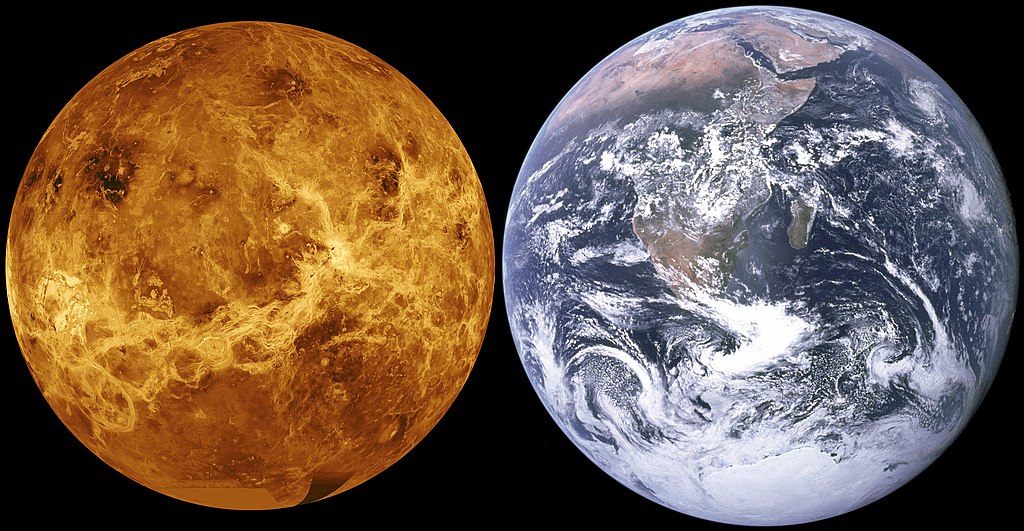
December 4, 2024 by Brian Koberlein
Collected at: https://www.universetoday.com/169998/maybe-venus-was-never-habitable/
Although they are very different today, Venus, Earth, and Mars were very similar in their youth. All three were warm, with thick, water-rich atmospheres. But over time, Mars became a cold, dry planet with a thin atmosphere, and Venus became superheated, with a crushing, toxic sky. Only Earth became a warm ocean world teeming with life. But why?
We know that Mars once had vast seas. It had the right conditions for life in the beginning, but with less gravity than Earth and a weak magnetic field, Mars lost much of its atmosphere over time, and most of its water either froze beneath the surface or became chemically locked in Martian clay. If Mars had been larger and more geologically active, perhaps it would have become another living world.
Which raises the question of Venus. In terms of mass and composition, Venus seems to be nearly a twin of Earth. Its surface gravity is 90% of Earth’s. While it doesn’t have a strong magnetic field like our world, it is geologically active. We can even see evidence of volcanic activity on its surface. Venus also retained a thick atmosphere, so why is it a hell-world compared to Earth?
The most common model of early Venus is that the planet was Earth-like once. Its water-rich atmosphere would have rained upon the surface to create warm seas and rivers, just like Earth and Mars. Some models suggest that Venus could have been Earth-like until 700 million years ago. But eventually, either because of its proximity to the Sun, a lack of magnetic field, or some geological process, Venus underwent a greenhouse transformation. Its oceans dried, and its atmosphere thickened to become the deadly world we see today. Perhaps we on Earth should look at Venus as a cautionary tale of what happens when greenhouse gases dramatically increase.

But new research argues that Venus was never a wet world. While it did have a water-rich early atmosphere early on, it never retained the water, and seas never formed on our planetary sibling.
The study begins by calculating the rate at which water, carbon dioxide, and other molecules are decomposed within the atmosphere. Ultraviolet radiation striking the upper atmosphere as well as chemical interactions can break apart these molecules. To maintain stable levels of water, for example, it must be replenished through volcanic activity.
On Earth, the volcanic gases released are mostly water vapor because Earth’s interior is rich in water. This allows our planet to replace water that decomposes in our upper atmosphere. But the interior of Venus is much more dry, with only 6% of the gases being water vapor. The rest is mostly carbon dioxide and sulfur compounds. In this model, the composition of volcanic gases is the main driver of how a planet’s atmosphere evolves, not the initial composition of the atmosphere. So, with little volcanic activity, the atmosphere of Mars thinned. With dry, sulfur-rich volcanic gases, Venus became a greenhouse world. With water-rich volcanic gases, Earth remained an ocean planet.
Currently, there is evidence for both evolutionary models on Venus, and neither can be ruled out. Future projects such as NASA’s DAVINCI mission could give us a richer view of the Venusian atmosphere, but until then, it remains to be seen whether the fate of a planet is written in its rock or its sky.
Reference: Constantinou, Tereza, Oliver Shorttle, and Paul B. Rimmer. “A dry Venusian interior constrained by atmospheric chemistry.” Nature Astronomy (2024): 1-10.

Leave a Reply